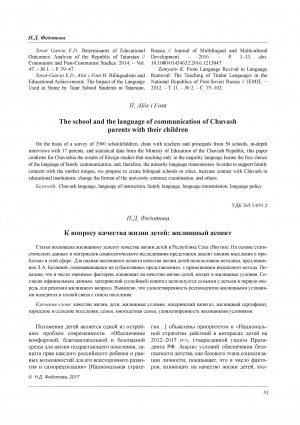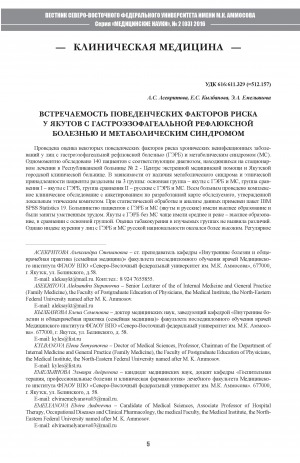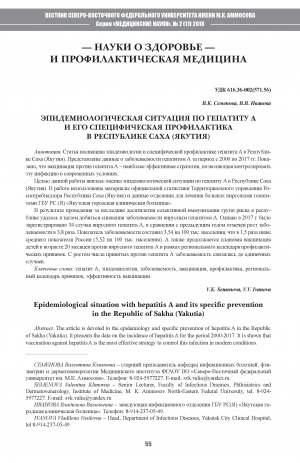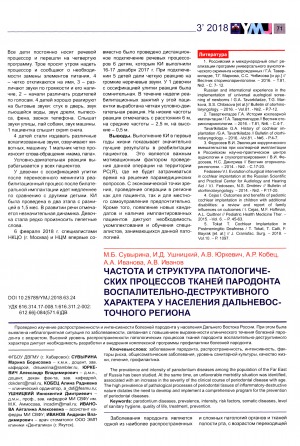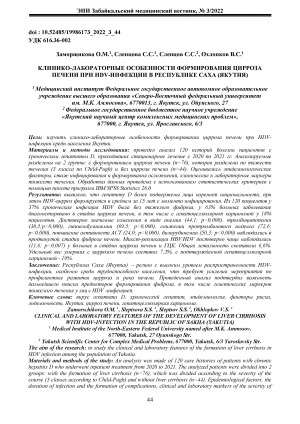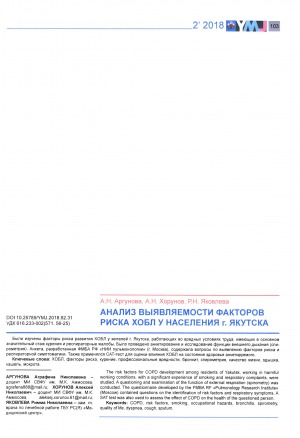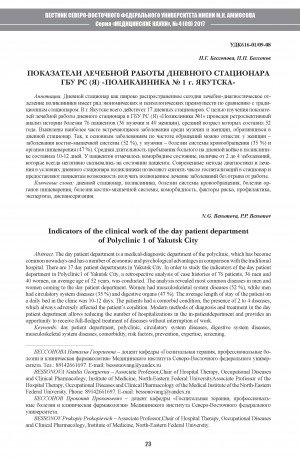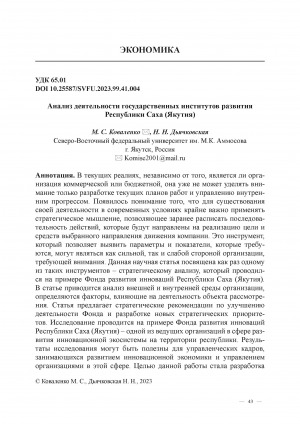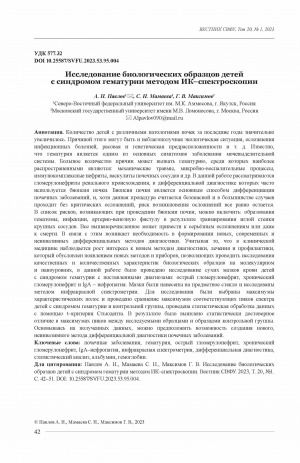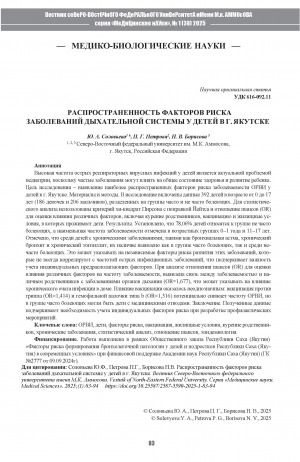
Распространенность факторов риска заболеваний дыхательной системы у детей в г. Якутске = Occurrence of risk factors for respiratory diseases in children of Yakutsk
Статья в журнале
Русский
616.2-053.2(571.56-25)
10.25587/2587-5590-2025-1-83-94
ОРВИ ; дети; факторы риска; вакцинация; жилищные условия ; курение родственников; хронические заболевания; статистический анализ ; отношение шансов; эпидемиология; ARI; children; risk factors; vaccination ; housing conditions; smoking of relatives; chronic diseases; statistical analysis ; odds ratio; epidemiology
High incidence of acute respiratory viral infections in children is a pressing issue in pediatrics, since frequent illnesses can affect the overall health and development of the child. The aim of the study was to identify the most common risk factors for acute respiratory viral infections in children in Yakutsk. Materials and methods. The study included data from 392 children aged 0 to 17 years (186 girls and 206 boys), divided into groups of frequently and infrequently ill. For statistical analysis, the Pearson chi-square test with Yates’ correction and the odds ratio (OR) were used to assess the influence of various factors, including smoking of relatives, vaccination, and living conditions in which children live. Results. It was found that 78.06% of children belong to the group of infrequently ill children, and the lowest incidence rate was noted in the age groups of 0-1 year and 11-17 years. It was noted that among children with chronic diseases, such as bronchial asthma, chronic bronchitis and chronic tonsillitis, their presence was detected both in the group of frequently ill and infrequently ill. This may indicate independent risk factors for the development of these diseases, which do not always correlate with thefrequency of acute infectious diseases, which emphasizes the importance of taking into account individual predisposing factors. When analyzing the odds ratio (OR) to assess the impact of various factors on the incidence rate, a relationship was found between the incidence and the presence of relatives with respiratory diseases (OR = 1.677), which may indicate the influence of a chronic source of infection in the home. The effect of vaccination was ambiguous: vaccination against influenza (OR = 1.414) and Haemophilus influenzae type b (OR = 1.316) potentially reduces the incidence of acute respiratory viral infections, but the group of frequently ill children could have children with medical exemptions. Conclusion: The data obtained emphasize the need to take into account individual risk factors when developing preventive measures.
Соловьева, Ю. А. Распространенность факторов риска заболеваний дыхательной системы у детей в г. Якутске / Ю. А. Соловьева, П. Г. Петрова, Н. В. Борисова ; Северо-Восточный федеральный университет им. М.К. Аммосова, Медицинский институт // Вестник Северо-Восточного федерального университета им. М. К. Аммосова. Серия "Медицинские науки". - 2025. - N 1 (38). - C. 83-94. - DOI: 10.25587/2587-5590-2025-1-83-94
DOI: 10.25587/2587-5590-2025-1-83-94
Войдите в систему, чтобы открыть документ
